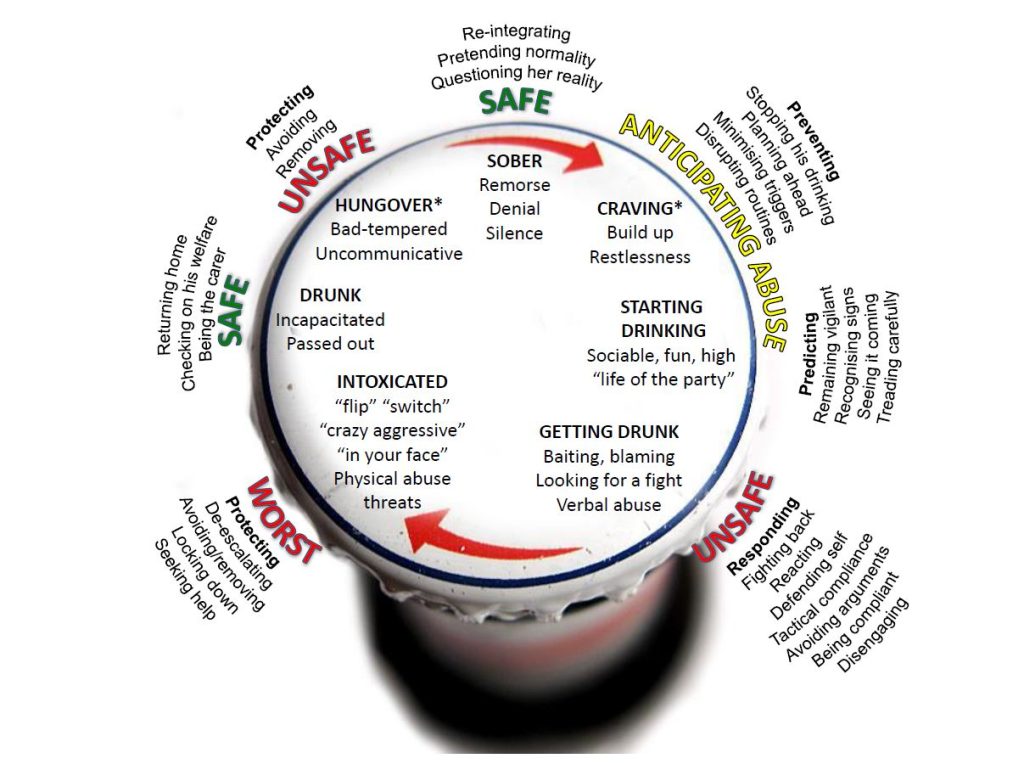This blog is based on a speech by Dr Ingrid Wilson during a recent FARE webinar that explored the link between alcohol and gender-based and family violence. Watch the full webinar here.
Dr Ingrid Wilson is a world-renowned researcher in alcohol-related intimate partner violence, an Assistant Professor at the Singapore Institute of Technology and Honorary Research Fellow at La Trobe University.
Content warning: This blog discusses alcohol and violence against women and children.
As a feminist researcher, I’ve always been curious about the sensitivities around alcohol as a risk factor for domestic, family and sexual violence.
When I looked back at 30 years of evidence, while it is clear alcohol makes men’s violence towards women worse, I realised there was little to help us understand what it is like to live with a partner who is violent when drinking alcohol.
The perspective of victim-survivors wasn’t part of the conversation.
That’s why my research has aimed to elevate the voices of women whose experience of alcohol-related abuse are rarely heard and dare I say, overlooked.
The cycle of drinking and violence
I’ve interviewed a range of women and in analysing their experience I found that violence was experienced by women as a cycle that was intimately connected to recognised stages of their partner’s drinking.
These women described with chilling precision, how their perpetrator changed from the fun and loving partner at the start of the drinking cycle and became increasingly aggressive and violent towards her the more intoxicated he became.

The worst stage where the perpetrator would “switch” or “flip” to heightened violence didn’t happen every time, but it happened enough for women to feel afraid every time he started drinking.
An important part of women’s experience was the “anticipated abuse” every time their partner drank alcohol. They didn’t know if it was going to escalate to that worst stage, but they had to prepare for it.
Safety strategies
Women have a range of strategies to manage the safety of themselves and children or others during this cycle.
Preventing: Women did everything they could to stop the violence from happening. Some women shared that they poured out alcohol or managed his drinking routines.
Predicting: These women knew to watch their partner’s drinking and observe for signs that violence may occur.
Responding: Women shared that they would defend themselves, but knowing this could be dangerous, responded with a ‘tactical passivity’, attempting to not worsen the violence.
Protecting: At this stage, women went into lockdown, and took measures to keep themselves, and their children safe such as hiding.
The ‘return to normal’ at the end of the drinking and violent episode presented women with relief, but also with a challenged sense of reality, sometimes having to act as though nothing happened.
“When he was drunk I would just try not to argue with him because I knew that it would never end well if I argued. The only way I stopped it was if I just shut up.”
Linda, 42
“I will usually wait for that stage when he would be too drunk to do anything, when he’ll be unstable on his feet – that was the moment when I knew I was pretty much safe.”
Carla, 43
“He would have no idea why I would be a nervous wreck or miserable or an absolute basket case.”
Kym, 46
Connecting alcohol and violence over the relationship trajectory
My research has also shed light on the evolution of these relationships.
In the early stage of the relationship, women shared that they didn’t see signs that would flag heavy drinking and aggression as men’s heavy drinking was often normalised, particularly in social contexts.
As these relationships became established and couples moved in together and starting a family, women noticed their partner’s alcohol use begin to impact their family life.
Women did all they could to get their partner help to stop drinking, often men were resistant, and so, women managed daily life around the cycle of drinking and violence.
Throughout this time women left and returned to the relationship. For many women, the catalyst to leave was a grave sense of fear that they or others such as children, would be severely harmed.
For women who have left these relationships the effects are visceral and long-lasting. Given Australia’s culture of drinking, the presence of alcohol in everyday life becomes a trigger for re-experiencing trauma which presents challenges for navigating new relationships and social settings involving alcohol.
“I think at the start … when he’s around another group of, like, another six boys who were drinking just as heavily, you don’t flag it.
Simone, 28
“A few months into the marriage… I started noticing he had alcohol issues … and … I started questioning why, and that’s when he started becoming a little bit more abusive.”
Sarita, 28
“It’s all about the alcohol. It wasn’t necessarily about no future with the relationship – I’d run out of hope that he was going to stop drinking.”
Belinda, 35
“Five years on now and I’m still waiting for the moment when he [new partner] will become drunk and angry.”
Carla, 43
The broad impact of men’s alcohol use on women
The impact of living with a partner who drinks alcohol and uses violence is far wider-reaching than aggression alone.
I recently published, alongside colleagues, a global review of qualitative research, which mapped the many ways women discuss the impact of their partner’s drinking.
Women shared the many impacts of violence, including forced sex and aggression hindering women’s ability to negotiate safe sex, economic or financial abuse when money intended for household spending was diverted to alcohol, and the burden of caregiving.
The review also showed that women suffer psychological distress and mental health harm. This is worsened because they face double stigma – the shame of having a partner with alcohol problems and experiencing violence which can also affect them seeking help.
What we can do to support women
Women are telling us that men’s drinking – and the culture that supports this – has an insidious effect on their lives and safety, and that alcohol use and violence are intertwined.
These wide-ranging harms are hidden and cumulative, where men’s drinking also acts as a tool for women’s economic, sexual and reproductive disempowerment.
That’s why we need to take a gendered perspective on men’s drinking and the harm it causes. We need to support interventions that address men’s problematic drinking, so we can in turn support women to stop the cycle of alcohol use and violence.
Importantly, the voices of those who have experienced violence exacerbated by alcohol must be centred in this conversation.







